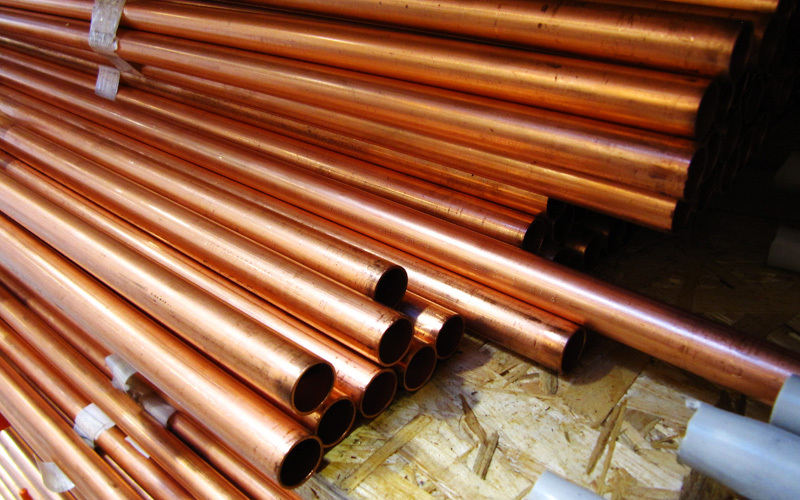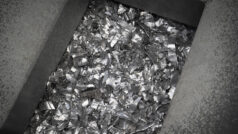World mine production is estimated to have declined by around 3.5% in the first quarter of 2017, with concentrate production declining by around 3% and solvent extraction-electrowinning (SX-EW) declining by 6%:
- The decline in world mine production was mainly due to:
- A 14% decline in production in Chile, the world’s biggest coppermine producing country, negatively affected by the strike at Escondida mine and lower output from Codelco mines.
- A decline in Canada and Mongolia concentrates production of 18% and 23%, respectively, mainly due to lower grades inplanned mining sequencing.
- A 10% decline in Indonesian concentrate production as output was constrained by a temporary ban on concentrate exports that started in January and ended in April.
- However overall decline was partially offset by a 17% and 9% rise in Mexican (concentrate and SX-EW) and Peruvian (concentrate) output, respectively, with both countries benefi tting from new and expanded capacity that was not yet fully available in the same period of last year.
- On a regional basis, production rose by 5% in Europe (including Russia) and 9% in Oceania while declining by 7% in the Americas and 5% in Africa, and remaining essentially unchanged in Asia.
World refined production is estimated to have remained essentially unchan ged in the first quarter of 2017 with primary production (electrolytic and electrowinning) declining by 2% and secondary production (from scrap) increasing by 13%:
- Increased availability of scrap allowed world secondary refined production to increase, notably in China.
- The main contributor to growth in world refined production was China (increase of 7%), followed by Mexico (12%) where expanded SX-EW capacity contributed to refined production growth.
- However, overall growth was partially offset by an 18% decline in Chile, the second largest refined copper producer, where both primary electrolytic refined production and electrowinning production declined.
- Production also declined in the third and fourth world leading refined copper producers, namely, Japan (in electrolytic production from concentrates) and in the United States (mainly in electrowinning output).
- On a regional basis, refined output is estimated to have increased in Asia (5%), in Africa (2%) and in Europe (including Russia) (2%) while declining in the Americas (12%) and in Oceania (5%).
World apparent refined usage is estimated to have declined by around 3% in the first quarter of 2017:
- Preliminary data indicates that although world ex-China usage might have grown by around 1%, growth was more than offset by a 6.5% decline in Chinese apparent demand.
- Chinese apparent demand (excluding changes in unreported stocks) declined by 6.5% because although refined copper production increased by 7%, net imports of refined copper declined by 35%.
- Among other major copper using countries, usage increased in India, Japan and Taiwan but declined in the United States and Germany.
- On a regional basis, usage is estimated to have declined in all regions: in Africa by 1%, in Asia by 3% (when excluding China, Asia usage increased by 7%), in the Americas by 1% and in Europe by 5%.
World refined copper balance for the first quarter of 2017 indicates a surplus of around 165,000 t (including revisions to data previously presented):
- This is mainly due to the decline in Chinese apparent demand (China currently represents 47% of the world copper refined usage).
- In developing its global market balance, ICSG uses an apparent demand calculation for China that does not take into account changes in unreported stocks [State Reserve Bureau (SRB), producer, consumer, merchant/trader, bonded]. To facilitate global market analysis, however, an additional line item—Refined World Balance Adjusted for Chinese Bonded Stock Changes—is included in the table below that adjusts the world refined copper balance based on an average estimate of changes in unreported inventories provided by three consultants with expertise in China’s copper market.
- In the first quarter of 2017, the world refined copper balance adjusted for changes in Chinese bonded stocks indicates a surplus of around 310,000 t.
Copper Prices and Stocks:
- Based on the average of stock estimates provided by independent consultants, China’s bonded stocks increased by around 145,000 t in the first quarter of 2017 from the year-end 2016 level. Bonded stocks increased by around 120,000 t in the same period of last year.
- The average LME cash price for May 2017 was US$5,591.50 per tonne, down from the April average of US$5,697.67 per tonne.
- The 2017 high and low copper prices through the end of May were US$6,145.00 (on 14th Feb) and US$5,466 per tonne (on 8th May), respectively, and the year average was US$5,759.14 per tonne (18% above 2016 annual average).
- As of the end of May, copper stocks held at the major metal exchanges (LME, COMEX, SHFE) totalled 650,043 t, an increase of 110,970 t (21%) from stocks held at the end of December 2016. Compared with the December 2016 levels, stocks were down at the LME (-1%) and up at SHFE (35%) and COMEX (78%).







